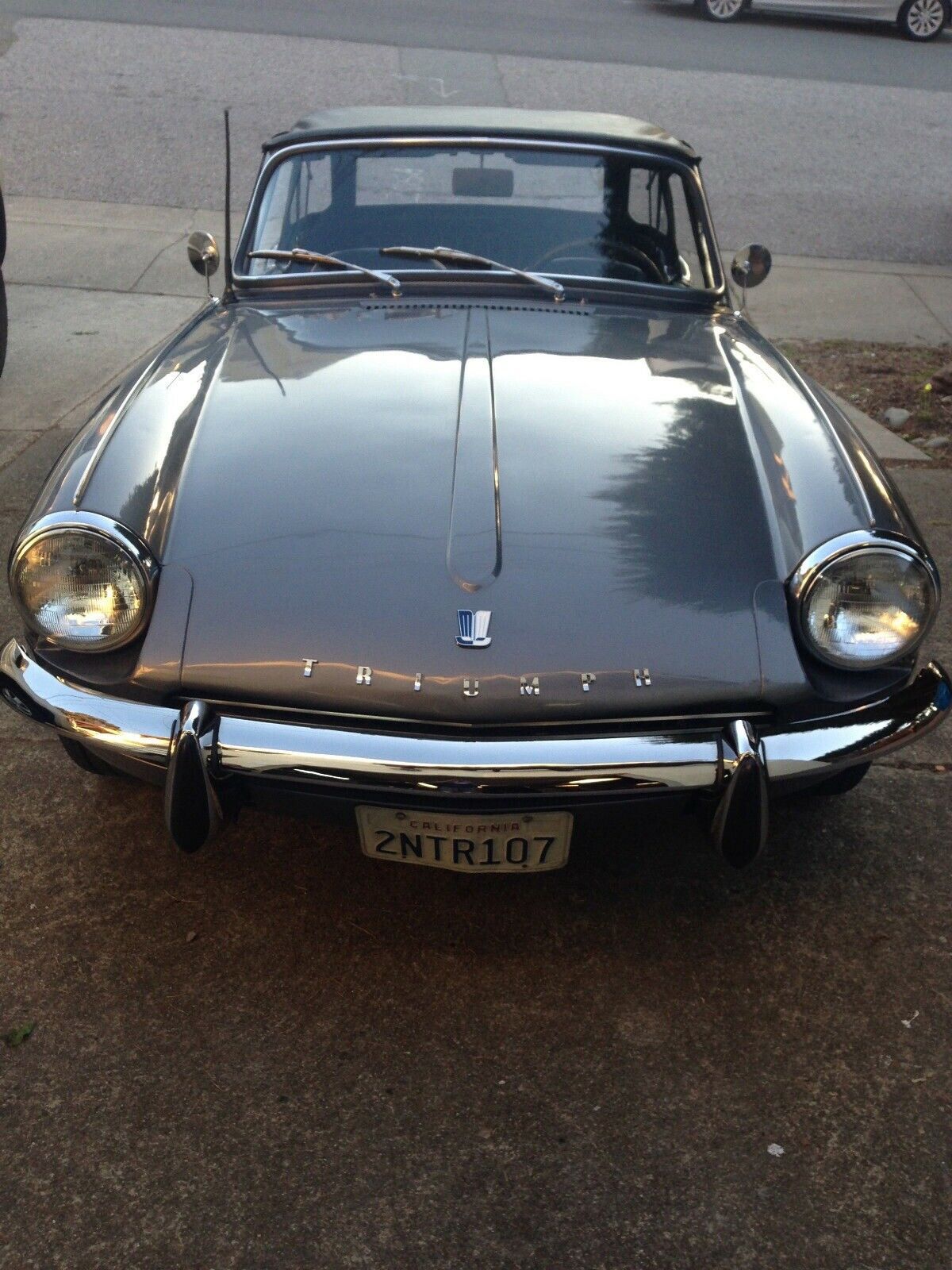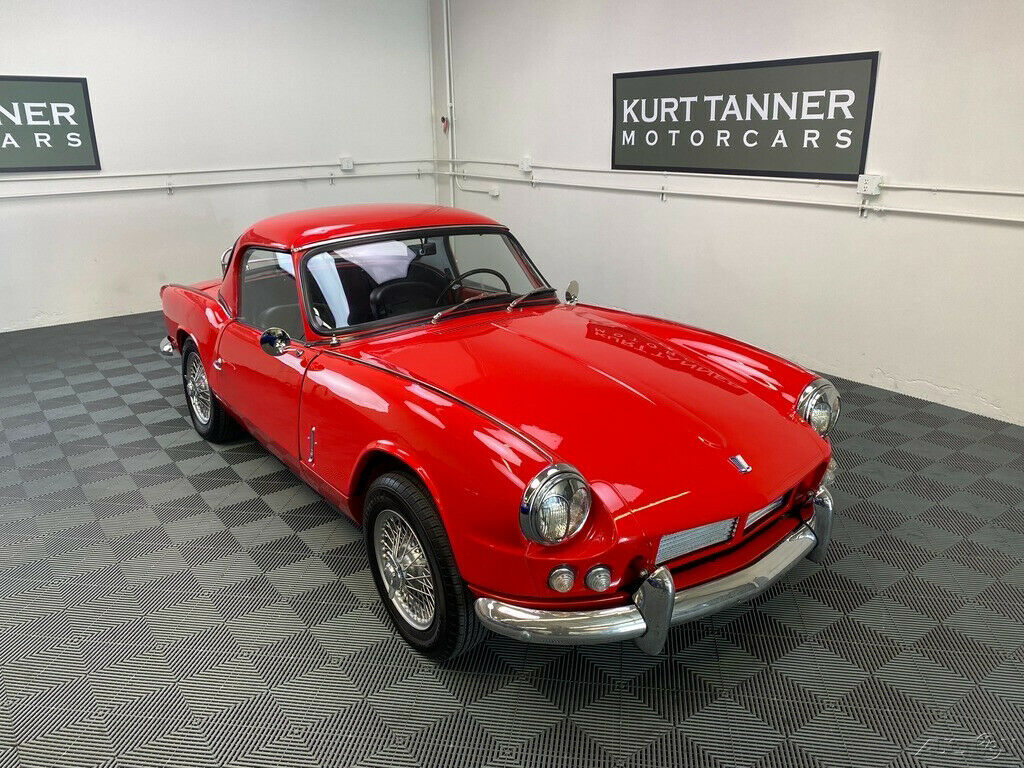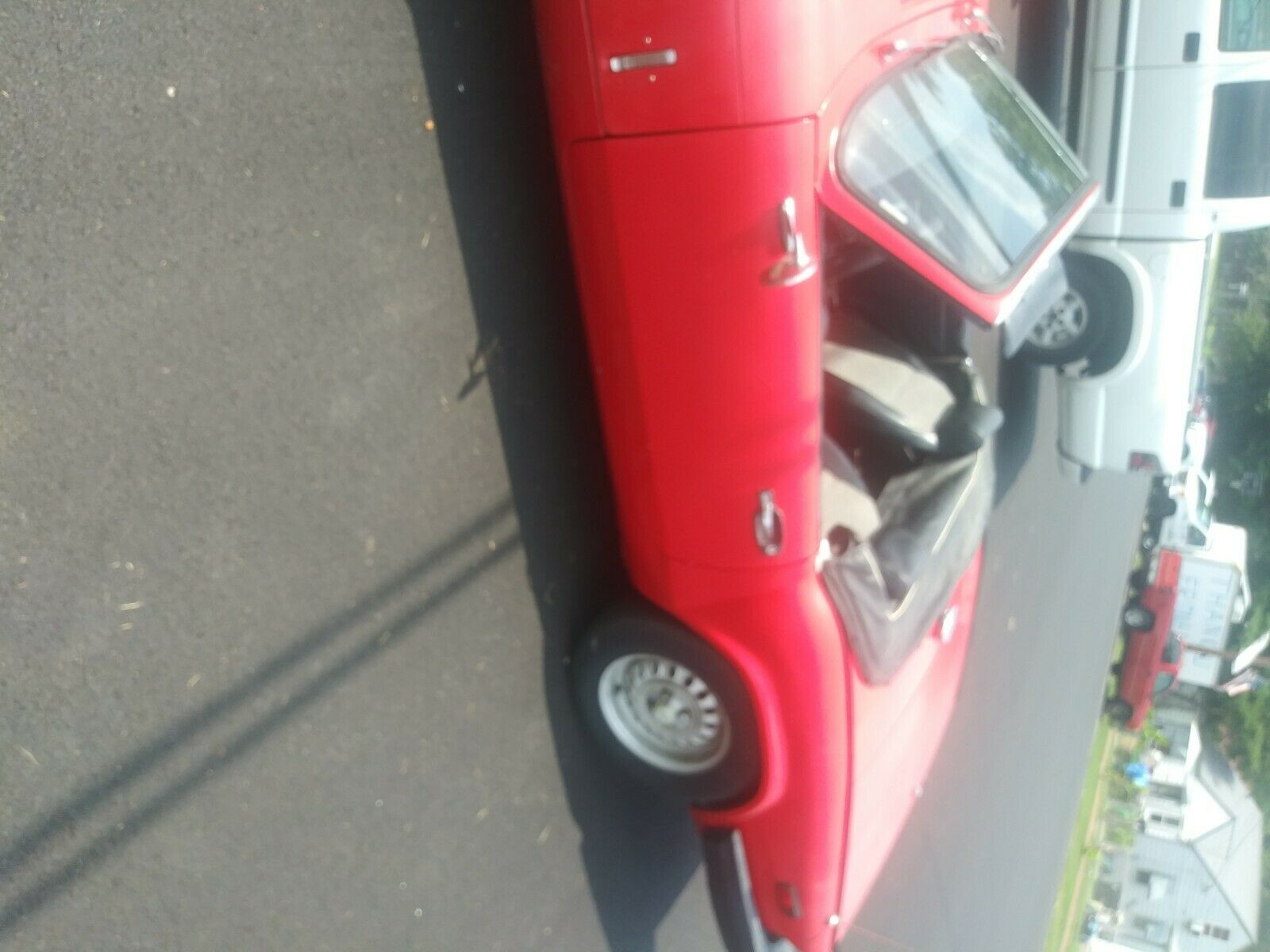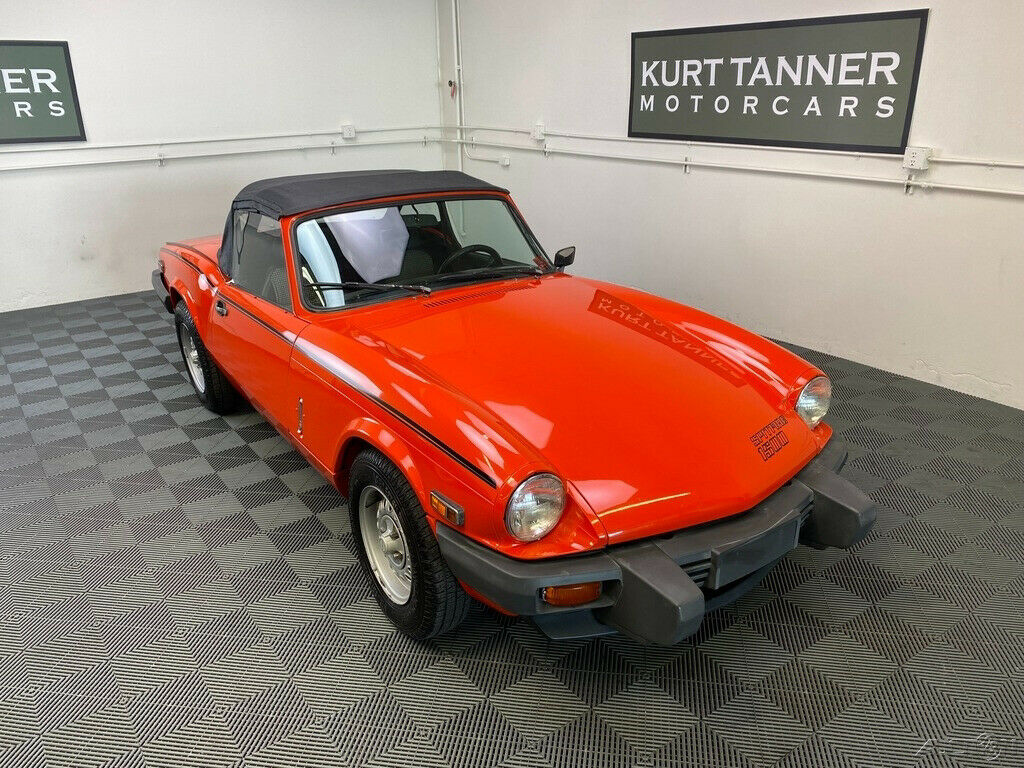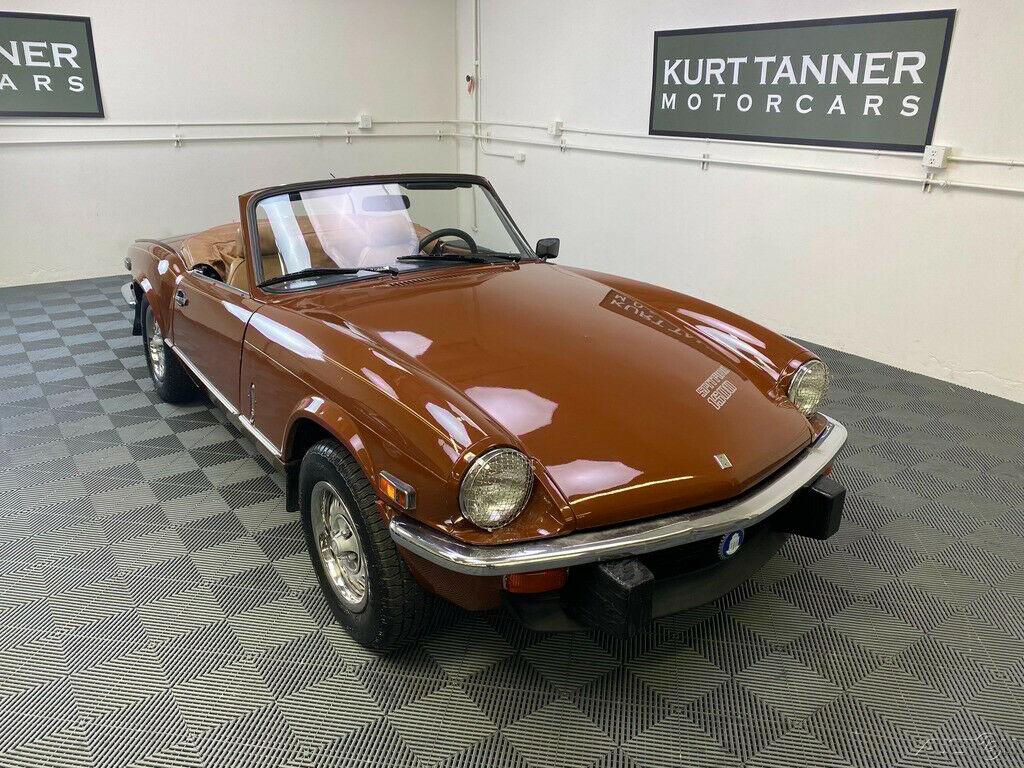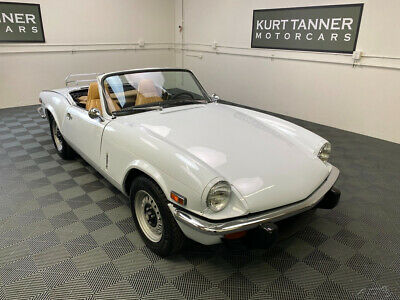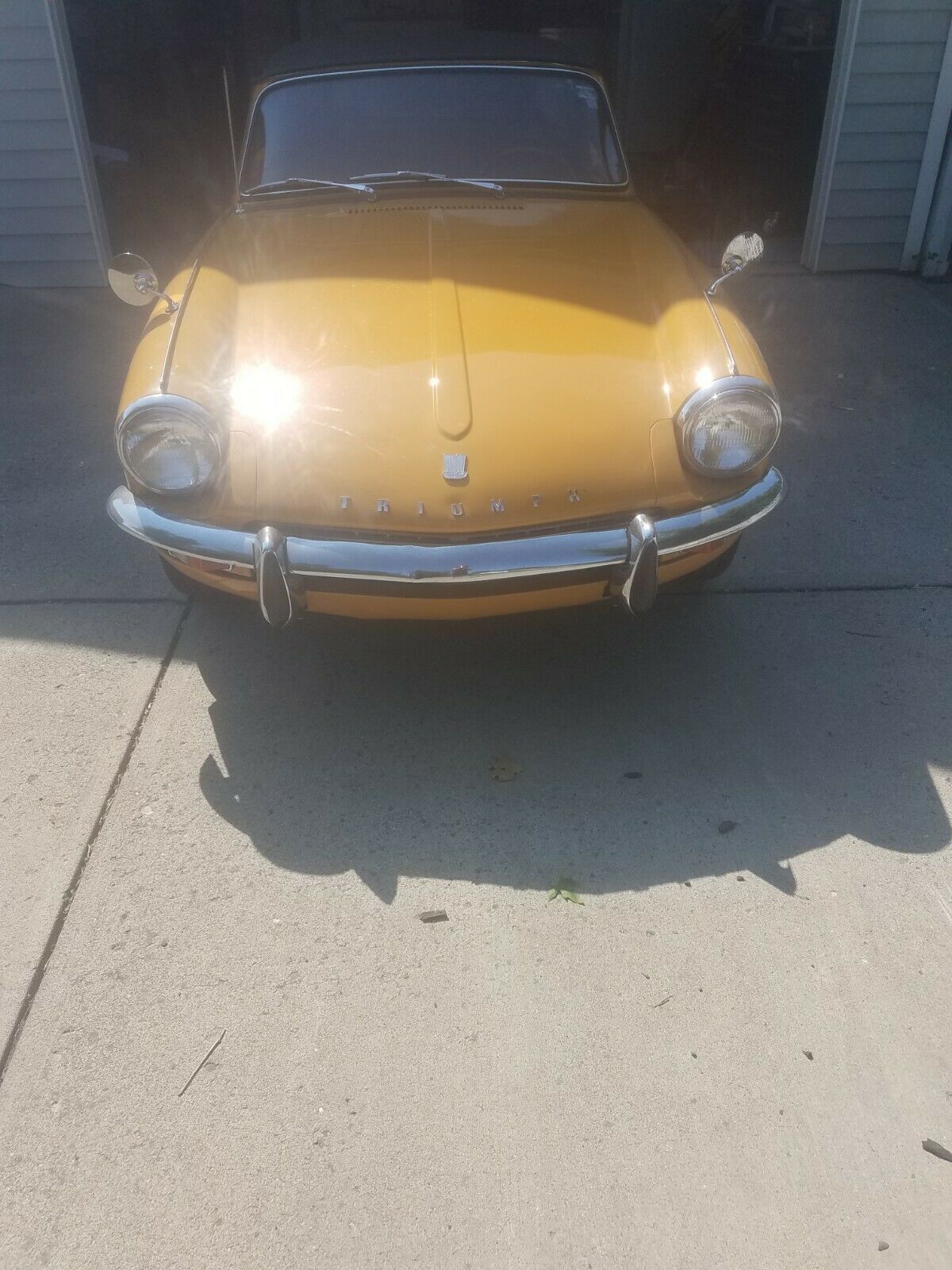-40%
1975 Triumph Spitfire
$ 5781.6
- Description
- Size Guide
Description
(855) 205-3511
(855) 205-3511
1
2
3
4
5
6
7
8
9
10
11
12
13
14
15
16
17
18
19
20
21
22
of
22
Full size photos
Video
Full size photos
Video
1975 Triumph Spitfire (Convertible)
Stock #:
12879
Exterior Color:
White
Interior Color:
Black
Body Type:
Convertible
Transmission:
4 Speed Manual
Drivetrain:
RWD
Mileage:
28,073
1975 Triumph Spitfire 1500 Convertible, well kept previous FL car, newer top, nice original interior, factory rally wheels, inline 4 cylinder engine mated to a 4 speed manual gear box. Dressed in a white exterior with black interior.
While the rest of the world saw 1500s with a compression ratio of 8.0:1, the American market model was fitted with a single Zenith-Stromberg carburettor and a compression ratio reduced to 7.5:1 to allow it to run on lower octane unleaded fuel. Popular in street and rally racing, Spitfires won numerous SCCA National Sports Car Championships in F and G Production classes; won its class at the 1964 Tour de France rally, coming in second overall, and won the 1964 Geneva Rally. In 1965, a Spitfire won its class in the Alpine Rally. There is a tendency among some Triumph enthusiasts to view the Spitfire as something less than a real Triumph. Yes, it was diminutive in terms of size and horsepower, but with more than 314,000 produced between 1962 and 1980 (on par with the entire TR line), it was the sports car heart of the company.
Triumph started as an auto manufacturer in 1923. It failed during the 1930s but was reborn after World War II under the umbrella of the Standard Car Co., best known for its saloons. Standard-Triumph premiered its first sports car, the TR2, in 1952. The TR2 was more successful than Standard saloons and was followed quickly by the TR3 and 3A. In 1958 Austin launched the tiny Donald Healey-designed Sprite to great success. A smaller roadster had also been discussed at Triumph and the Sprite's success encouraged the firm to produce it.
In late 1960 a prototype, codenamed "The Bomb," was constructed in Turin by designer Giovanni Michelotti, using a Triumph Herald saloon chassis as its foundation. But the project was shelved when truck maker Leyland absorbed Standard-Triumph in 1960. A year later, a Leyland exec spotted The Bomb in a corner and the little sports car was given the go-ahead.
It debuted at the London motor show in October 1962 as the "Spitfire." Synony-mous with the Battle of Britain fighter, the name resonated with the British public. Though more expensive, the Spitfire outsold the Sprite, offering more content than Austin's petite convertible. The Spitfire 4, as it was officially called, came with a 1147-cc derivative of the Herald engine, pushing it to 60 mph in 17 seconds and topping out at 92 mph. Sales took off in the United States as well, climbing steadily as successive iterations of the car, including the more powerful MkII and MkIII, appeared.
The Spitfire's racing potential was highlighted when Triumph decided to use it in place of the under-performing TR4 in 1964. Four fiberglass hardtop racers were built for Le Mans, one of which finished third in its class. The racer bodies foreshadowed the eventual GT6 Spitfire coupe but were campaigned with the same 1147-cc engines as their street counterparts. The cars raced successfully at Sebring that year and returned to Le Mans in 1965, taking first and second in class. Piloted by notables like David Hobbs, they also performed with distinction in various European rallies and in the SCCA where Bob Tullius took his Group 44 Spits to a number of wins in the late '60s.
Michelotti freshened the design in 1970 (MkIV), which featured rear suspension improvements and a stroked 1493-cc version of the four-banger good for 71 horsepower.
In 1973 British Leyland rebadged the model as the Spitfire 1500. Minor interior and exterior details changed but most significantly, emission and safety regulations were met with raised suspension, bumper and engine modifications. Lucas electrics and traditional reliability problems were still part of the package but more than 90,000 examples of the popular machine were sold. The 1500 continued in production until 1980 when stricter emission requirements convinced Leyland to retire its venerable sportster.
Vehicle Description
1975 Triumph Spitfire 1500 Convertible, well kept previous FL car, newer top, nice original interior, factory rally wheels, inline 4 cylinder engine mated to a 4 speed manual gear box. Dressed in a white exterior with black interior.
While the rest of the world saw 1500s with a compression ratio of 8.0:1, the American market model was fitted with a single Zenith-Stromberg carburettor and a compression ratio reduced to 7.5:1 to allow it to run on lower octane unleaded fuel. Popular in street and rally racing, Spitfires won numerous SCCA National Sports Car Championships in F and G Production classes; won its class at the 1964 Tour de France rally, coming in second overall, and won the 1964 Geneva Rally. In 1965, a Spitfire won its class in the Alpine Rally. There is a tendency among some Triumph enthusiasts to view the Spitfire as something less than a real Triumph. Yes, it was diminutive in terms of size and horsepower, but with more than 314,000 produced between 1962 and 1980 (on par with the entire TR line), it was the sports car heart of the company.
Triumph started as an auto manufacturer in 1923. It failed during the 1930s but was reborn after World War II under the umbrella of the Standard Car Co., best known for its saloons. Standard-Triumph premiered its first sports car, the TR2, in 1952. The TR2 was more successful than Standard saloons and was followed quickly by the TR3 and 3A. In 1958 Austin launched the tiny Donald Healey-designed Sprite to great success. A smaller roadster had also been discussed at Triumph and the Sprite's success encouraged the firm to produce it.
In late 1960 a prototype, codenamed "The Bomb," was constructed in Turin by designer Giovanni Michelotti, using a Triumph Herald saloon chassis as its foundation. But the project was shelved when truck maker Leyland absorbed Standard-Triumph in 1960. A year later, a Leyland exec spotted The Bomb in a corner and the little sports car was given the go-ahead.
It debuted at the London motor show in October 1962 as the "Spitfire." Synony-mous with the Battle of Britain fighter, the name resonated with the British public. Though more expensive, the Spitfire outsold the Sprite, offering more content than Austin's petite convertible. The Spitfire 4, as it was officially called, came with a 1147-cc derivative of the Herald engine, pushing it to 60 mph in 17 seconds and topping out at 92 mph. Sales took off in the United States as well, climbing steadily as successive iterations of the car, including the more powerful MkII and MkIII, appeared.
The Spitfire's racing potential was highlighted when Triumph decided to use it in place of the under-performing TR4 in 1964. Four fiberglass hardtop racers were built for Le Mans, one of which finished third in its class. The racer bodies foreshadowed the eventual GT6 Spitfire coupe but were campaigned with the same 1147-cc engines as their street counterparts. The cars raced successfully at Sebring that year and returned to Le Mans in 1965, taking first and second in class. Piloted by notables like David Hobbs, they also performed with distinction in various European rallies and in the SCCA where Bob Tullius took his Group 44 Spits to a number of wins in the late '60s.
Michelotti freshened the design in 1970 (MkIV), which featured rear suspension improvements and a stroked 1493-cc version of the four-banger good for 71 horsepower.
In 1973 British Leyland rebadged the model as the Spitfire 1500. Minor interior and exterior details changed but most significantly, emission and safety regulations were met with raised suspension, bumper and engine modifications. Lucas electrics and traditional reliability problems were still part of the package but more than 90,000 examples of the popular machine were sold. The 1500 continued in production until 1980 when stricter emission requirements convinced Leyland to retire its venerable sportster.
Vehicle Warranty
All vehicles are sold As-Is Where-Is with no warranty expressed or implied.
About Country Classic Cars
www.CountryClassicCars.com
Country Classic Cars is located in Staunton, Illinois right on Historic Route 66. The automobiles sold at Country Classic Cars combine all the elements of the classic motoring experience. Our classic and collector cars reflect the entire range of today’s social and economic experience: from the most exquisite automobiles of unequalled perfection, to total restoration projects. All conditions our reflected in their cost, with attention to each particular model, any body-work issues, engine components, any interior snags, etc. No matter what type of vehicle or price range you are in, our team at Country Classic Cars is excited to meet you, hear your story, and help you achieve your automotive dreams.
Contact us for more details
(855) 205-3511
(855) 205-3511
Terms and Conditions
Payment Options
We accept the following payment methods:
- Cashier's Check/money order
- Personal check (once cleared)
Vehicle Pickup & Shipping
All shipping charges are buyer's responsibility.
Finance, Warranty, Shipping question?
Call the dealer at (855) 205-3511
General Terms
Notice to Bidders: The vehicles we list for sale at eBay are also for sale at our retail location. Please contact us to confirm vehicle availability.
TITLES: All vehicles listed for sale are titled and we have the titles in hand.
We reserve the right to end an auction early. Deposit: We require a non-refundable 0 deposit within 48 hours of winning the auction. Please call to make arrangements for payment. We accept the following forms of payment: Cash in person, certified funds, institutional financing. All sales transactions must be completed within 7 calendar days of auction close.
Prices are subject to change without notice. Although every effort is made to present accurate and reliable vehicle information, use of this information is voluntary, and should only be deemed reliable after an independent review of its accuracy, completeness, and timeliness. It is the sole responsibility of the customer to verify the existence of options, accessories and the vehicle condition before time of sale. Any and all differences must be addressed prior to time of sale. No expressed or implied warranties, including the availability or condition of the equipment listed is made. EPA mileage estimates are for comparison purposes only. Actual mileage may vary depending on driving conditions, driving habits, and vehicle maintenance.
Fees and Taxes
State or local taxes, title, license fee, processing fees, registration fee, dealer documentary fee, finance charges, emission testing fees, and compliance fees are additional to the advertised price.













